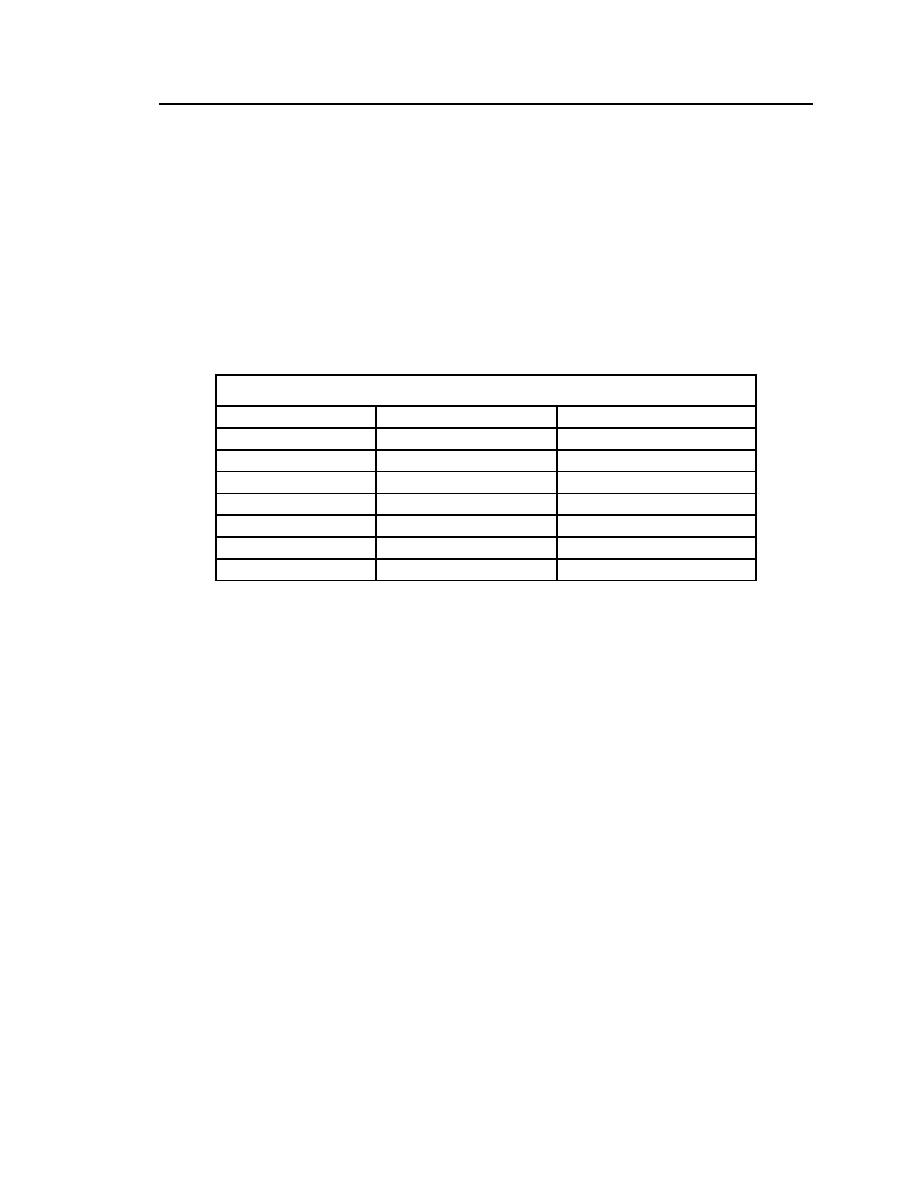
Army Aircraft Icing
3
2
ARMY AVIATION OPERATIONS
Current and future operations
The following excerpts are from FM 1-100, Army Aviation Operations (U.S.
Army 1997a). Aviation missions are summarized in Table 1. A brief description
of the Army's rotary wing and fixed-wing aircraft is given in Appendix A.
Table 1. Aviation missions (FM 1-100, Figure 2-1).
Combat
Combat support
Combat service support
Command and control
Aerial sustainment
Security
Air movement
Casualty evacuation
Attack
Electronic warfare
Air assault
Combat search and rescue
Theater missile defense
Air traffic services
Special operations
Aerial mine warfare
Support by fire
Aviation, as a maneuver force, is the third-dimension centerpiece of
the land force. Reconnaissance, attack, utility, and cargo helicopters
complemented by special operations forces (SOF), fixed-wing and medi-
cal evacuation (MEDEVAC) aircraft, and air traffic service (ATS) units,
comprise [aviation's] contribution to the fight for a global Army. [1-3.b]
Army aviation greatly enhances the commander's ability to apply
four fundamental principles of war--maneuver, mass, surprise, and
economy of force. [1-5.a.(3)]
Aviation's greatest contribution to battlefield success is the ability to
apply decisive combat power at critical times, virtually anywhere on the
battlefield. This may be direct fire from aviation maneuver units or the
insertion of overwhelming infantry forces or artillery fires, delivered into
combat via air assault. This versatility is the very essence of Army
aviation. [1-5.c.(1)]
Army aviation contributes to the following battlefield operating
systems functions: maneuver; intelligence; fire support; air defense;
mobility, countermobility, and survivability; logistics; and battle
command. [16] Within the intelligence function, Army aviation



 Previous Page
Previous Page
